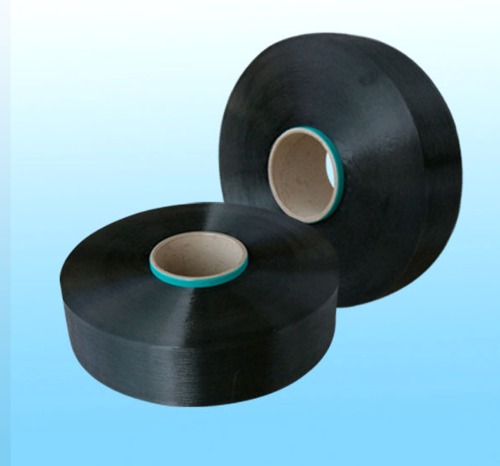POY yarn stands for Partially Oriented Yarn. It is a type of synthetic yarn made from polyester fibers. POY yarn is produced through a process called polymerization, where polyester chips are melted and extruded through spinnerets to form continuous filaments.
During the manufacturing process, the polyester filaments are partially oriented, meaning they are stretched or drawn to align the molecules and impart some degree of molecular orientation. However, the filaments are not fully oriented like in fully drawn yarn (FDY). This partial orientation gives POY yarn certain characteristics and properties.
Here are some key features and uses of POY yarn:
Semi-Dull or Bright: POY yarn can have a semi-dull or bright appearance, depending on the desired finish and application.
Low Shrinkage: POY yarn has relatively low shrinkage properties compared to other types of polyester yarn. This makes it suitable for applications where dimensional stability is important.
Good Strength: POY yarn has good tensile strength, allowing it to withstand tension and stress during processing and use.
Versatile: POY yarn can be used in various textile applications, such as apparel, home textiles, upholstery, industrial fabrics, and technical textiles. It can be further processed into different types of yarn, including fully drawn yarn (FDY), textured yarn (DTY), and air-textured yarn (ATY), to achieve desired characteristics and appearances.
Dyeability: POY yarn can be easily dyed due to its receptive nature to colorants. It can be dyed using various dyeing techniques, including high-temperature dyeing, low-temperature dyeing, and package dyeing.
Knitting and Weaving: POY yarn is suitable for both knitting and weaving processes, making it a versatile choice for textile manufacturers.
Cost-Effective: POY yarn is often considered a cost-effective option due to its production process and properties.
Besides,POY yarn holds significant importance in the textile industry for several reasons:
Versatility: POY yarn is highly versatile and can be further processed into various forms, such as fully drawn yarn (FDY), textured yarn (DTY), or air-textured yarn (ATY). This versatility allows textile manufacturers to create a wide range of fabrics and products to meet different market demands.
Strength and Durability: POY yarn possesses good tensile strength, which makes it suitable for applications where strength and durability are essential. Fabrics made from POY yarn can withstand regular wear and tear, making them long-lasting.
Dyeability: POY yarn has excellent dye affinity, making it easy to dye in a variety of colors. This property enables textile manufacturers to produce vibrant and colorful fabrics and garments.
Cost-effectiveness: POY yarn is generally considered cost-effective compared to other types of yarn. Its production process is relatively efficient, leading to lower manufacturing costs. This makes it an attractive option for mass production and price-sensitive markets.
Adaptability to Different Applications: POY yarn finds applications in various textile sectors, including apparel, home textiles, upholstery, industrial fabrics, and technical textiles. Its adaptability to different processes like knitting, weaving, or further texturing makes it suitable for a wide range of products.
Dimensional Stability: POY yarn has relatively low shrinkage properties, providing good dimensional stability to fabrics. This characteristic ensures that the fabric maintains its shape and fit even after washing or extended use.
Eco-friendly Properties: Polyester, the material used to produce POY yarn, can be recycled. Recycling polyester reduces the consumption of virgin resources and helps minimize environmental impact.
Consistency: POY yarn is produced through a controlled and standardized manufacturing process, resulting in consistent quality and uniformity. This reliability is crucial for manufacturers to deliver consistent products to their customers.




 English
English 中文简体
中文简体






 Home
Home